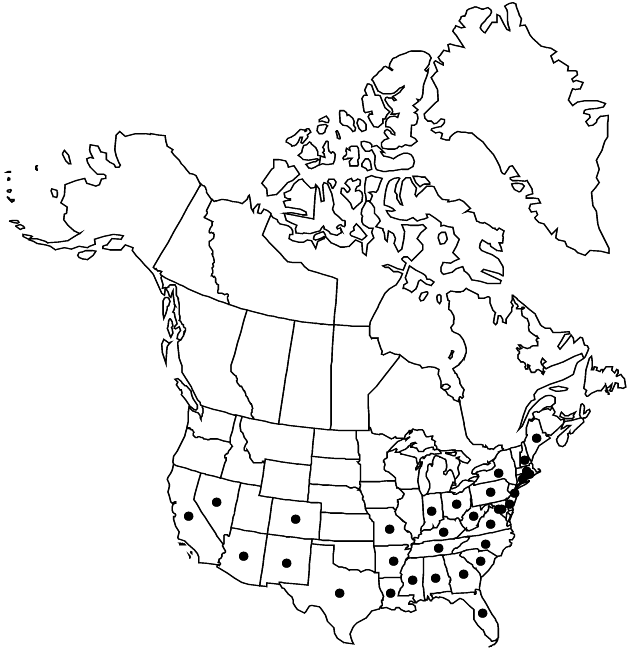Bidens laevis
Prelim. Cat., 29. 1888.
Annuals (sometimes persisting), (10–)20–60(–120+) cm. Leaves (sometimes in 3s or 4s) sessile; blades obovate or elliptic to lanceolate or linear, (20–)50–100(–160+) × (5–)10–25(–40+) mm, bases cuneate to rounded, margins usually coarsely dentate to serrate, sometimes ciliate, apices acute to acuminate, faces glabrous. Heads (erect at flowering, sometimes nodding in fruit) borne singly or in open, ± corymbiform arrays. Peduncles (10–)20–60 mm. Calyculi of 5–7(–9+) erect or spreading to reflexed, oblanceolate or lanceolate to linear, often foliaceous bractlets or bracts (6–)10–12(–20+) mm, margins usually ciliate, abaxial faces glabrous or bases hispidulous. Involucres turbinate to hemispheric or broader, (4–)6–8(–10+) × 8–12+ mm. Phyllaries 8–12, ovate or obovate to lance-oblong, (4–)6–8(–10+) mm (tips often orange to purplish, as are tips of paleae). Ray florets usually 7–8, rarely 0; laminae orange-yellow, (10–)15–25(–30) mm. Disc florets (25–)60–100(–150+); corollas yellow to orange-yellow, 3–6.5 mm. Cypselae blackish, red-brown, or stramineous, obcompressed, flattened or unequally 3–4-angled, ± cuneate, outer 6–8 mm, inner 8–10 mm, margins retrorsely ciliate or barbed, apices ± truncate to convex, faces ± 1-nerved, ± striate, glabrous; pappi of 2–4 ± erect, retrorsely barbed awns 3–5 mm. 2n = 22, 24.
Phenology: Flowering Aug–Oct(–Dec).
Habitat: Meadows, marshes, and margins of pools, streams, estuaries
Elevation: 0–2800 m
Distribution

Ala., Ariz., Ark., Calif., Colo., Conn., Del., D.C., Fla., Ga., Ind., Ky., La., Maine, Md., Mass., Miss., Mo., Nev., N.H., N.J., N.Mex., N.Y., N.C., Ohio, Pa., R.I., S.C., Tenn., Tex., Va., W.Va., Mexico, Central America, South America, introduced Pacific Islands (Hawaii).
Discussion
Bidens laevis and B. cernua are similar in gross appearance; specimens of one are sometimes misidentified as the other. Perhaps they represent extremes of a single species.
Selected References
None.